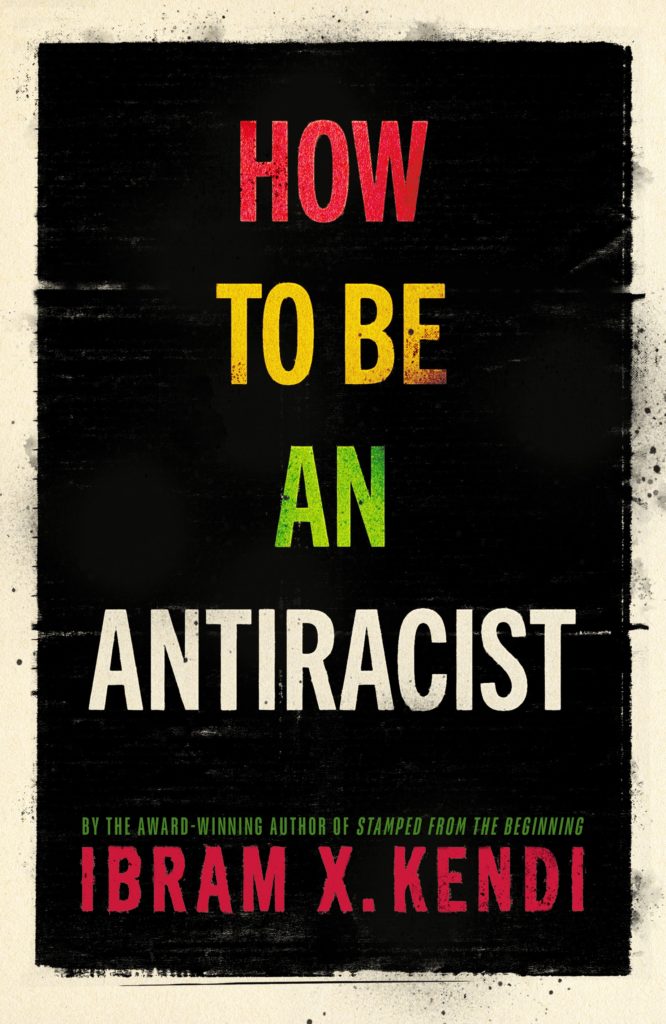How to Be an Antiracist
A Book by Ibram X. Kendi
Reviewed by Kristy Dolson.
“I used to be racist most of the time,” Ibram X. Kendi writes in the introduction of his latest bestseller. “I am changing.” Both a sweeping international history of racism and an intimate personal history of one man’s growth away from racist ideas, How to Be an Antiracist is a phenomenal read. After the murder of George Floyd earlier this year, the Black Lives Matter movement gained massive international support. Books by Black authors, both fiction and non-fiction, flooded bestseller lists as people began undertaking the work of educating themselves on the history of police brutality and racist cycles.

How to Be an Antiracist is about peeling back the layers of internalized racism in the lived experiences of one Black American in order to build a more sturdy foundation of intersectional antiracism. As a step-by-step guide towards antiracism interwoven with a chronological memoir, he begins by outlining his parents’ entry into the Black power movement of the 1970s. These values and beliefs dueled with the dominant White consciousness that he encountered in school to shape his own views on race and racism. He traces the development of those internalized racist beliefs before pointing out the key individuals and interactions that helped him to eventually identify and dismantle them. In the end, he compares racism to cancer and explains how, like cancer, there is a clear treatment for racist policies. Eliminating these policies and voting out racist policymakers will make the body politic of America healthier and longer-lived.
“Ideas often dance a cappella,” Kendi later writes in his chapter on gender. Reflecting on his parents’ silence towards gay and lesbian lives, this chapter highlights how silence causes harm for all groups pushed to the margins of society. I felt a huge shift when, as an undergraduate encountering feminism and queerness for the first time in his role models, Kendi recognized an ignorance in himself and went out of his way to learn more. He offers himself as a model for how others can move towards their own intersectional antiracist support by owning up to his ignorance and erroneous views.
How to Be an Antiracist is exceptionally well organized. Kendi begins with an introduction that highlights a formative event on his journey towards antiracism before setting out on that journey proper. Chapter one outlines why definitions are necessary to clarify our views and goals. These definitions anchor the remainder of the book. Most chapters begin by juxtaposing the definition for a racist approach against the definition for an antiracist approach to the topic of that chapter. With 18 chapters ranging from “Power”to “Sexuality,”this book scaffolds the reader towards practical and functional antiracism as it seeks to dismantle 500 years of racist policies.
“Changing minds is not a movement,” Kendi writes as his narrative catches up to the present day. When this hypocrisy was pointed out by audiences of his lectures, he founded the Center for Antiracist Research. He now works full time towards changing policies. As part of that work, he wrote this book to provide readers with a stepladder towards antiracist action and the creation of a more equitable and just society. Published in 2019, this book meets the needs of the current political and social climate of North America. BLM movements around the world have gathered increased strength and support in the wake of the murders of George Floyd and Breonna Taylor. An outraged population has finally mobilized against racist policies and policymakers. It feels like real progress is being made. But power never gives itself up easily. Only time will tell what today’s actions will yield.
How to Be an Antiracist is a must read. Share it with your friends, family, and colleagues. At times difficult to digest, the overall tone and message is hopeful. As Kendi states, “Our identities are not fixed.” We can be racist one minute and antiracist the next. But it is in the best interest of ourselves and our planet to strive towards antiracism at every opportunity. This book will show you how. Reading and learning is an important step on my road to active antiracism. However, I won’t stop here. I will amplify historically marginalized voices. I will donate my time and money to support organizations fighting for antiracist policy change. I will do the work needed to bring a more equitable society into being for future generations. It is my hope that many others will join me on the unlit road of antiracism.
The Reviewer
Kristy Dolson lived in South Korea for five years before taking a year off to travel, read and spend time with her family in Canada and Australia. She holds a Bachelor of Education and has now returned to the Gwangju area where she splits her time between teaching at the new Jeollanamdo International Education Institute and reading as much as she can.







